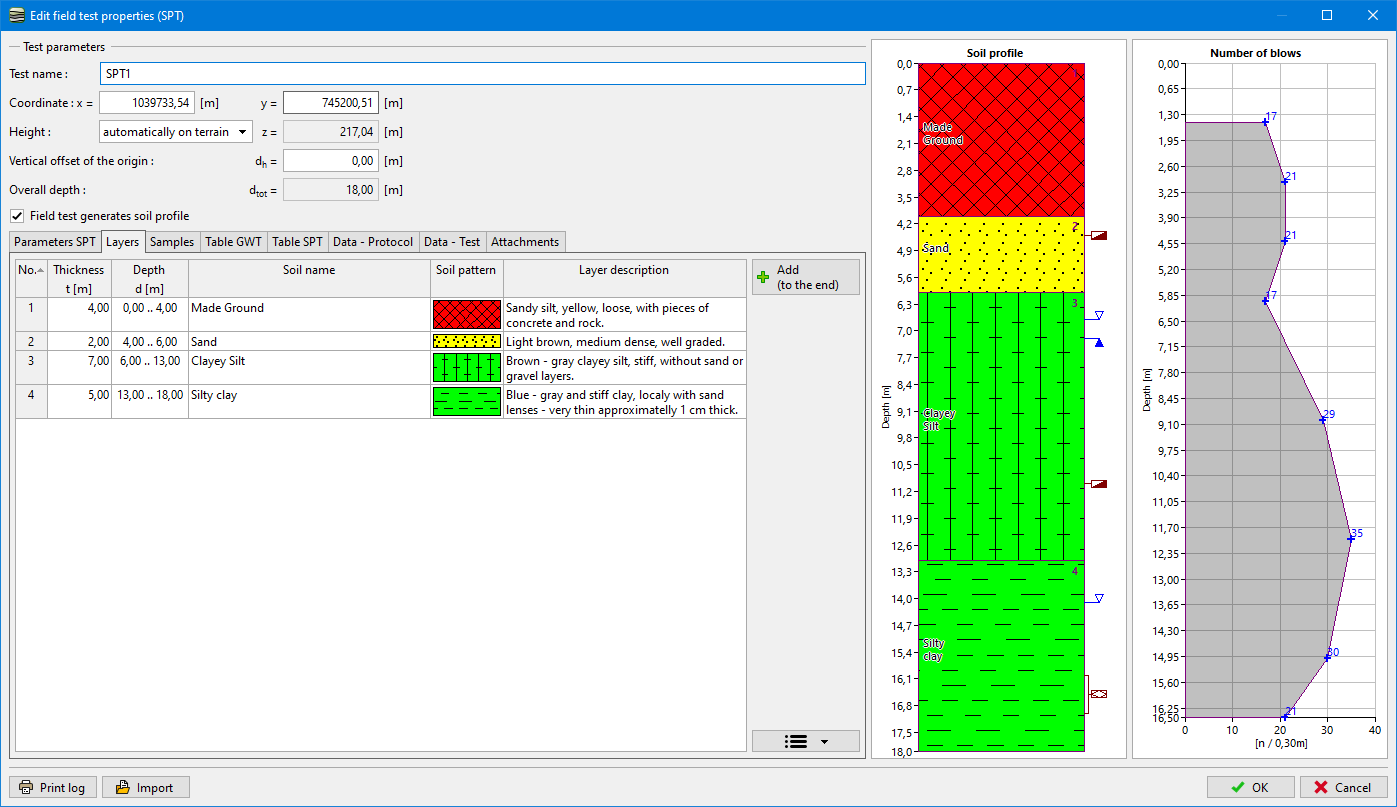SPT (Standard Penetration Test)
The result of the Standard penetration test (SPT) is a number of blows N (penetration resistance), needed to penetrate a sampling device to the soil or rock by a so-called Interval of penetration depth 0,3 m (1 ft).
The number of blows N measured during the SPT test is correlated for the reason of various testing devices and for the influence of the weight of overburden in sand. Corrected (correlated) value N60 is used in calculations.
The correlated number of blows N60 is calculated according to this equation:
![]()
where: | Er | - | Energetic ratio of the testing device |
N | - | number of blows measured during SPT test | |
CN | - | correlation for vertical stress | |
λ | - | user’s correlation |
The energetic ratio of testing device Er represents the ratio of real energy Emeas and the calculated energy Etheor of the ram. It is not necessary to use a correlation for a standard SPT device (Mohr), because the efficiency of the machine is 60 % and correlation is performed to this value (the values measured during SPT test are used).
Correlation CN for vertical stress σ'V - represents the influence of weight of overburden in sands. The values of the correction factor CN greater than 1.5 should not be used (according to EN ISO 22476-3 recommendations).
Table of built-in types of correlations
Type | Type of consolidation | Relative compactness lp [%] | Correlation factor CN |
Type 1 - EN ISO 22476-3 (Tab. A2) | Normally consolidated | 40 - 60 |
|
Type 2 - EN ISO 22476-3 (Tab. A2) | 60 - 80 |
| |
Type 3 - EN ISO 22476-3 (Tab. A2) | Over-consolidated | - |
|
Type 4 - EN ISO 22476-3 | Normally consolidated sands | - |
|
Type 5 - FHWA (1998), Peck (1974) | - | - |
|
where: | σ'V | - | Effective vertical stress |
User’s correlationλ [-] - represents the loss of energy due to the length of the system of rods, the impact of borehole diameter, or the influence of the sampling device.
The result of SPT is its process plotted as a graph. The evaluation of standard penetration tests are used as input parameters for the analyses in the "Micropile" and "Spread Footing CPT" programs and for stratigraphic modeling in the "Stratigraphy" program.
Standard penetration tests can be imported into the program as .txt data.
The name of the test and the vertical offset of the origin of the SPT is entered in the "New field test" dialog window. In the "Stratigraphy" program, the input of coordinations x, y, z is required.
The number of blows is entered in the table.
 Dialog window "New field test"
Dialog window "New field test"
Literature:
EN ISO 22476-3: Geotechnical investigation and testing - Field testing. Part 3: Standard penetration test, 2005.
Roy E. Hunt: Geotechnical Engineering Investigation Handbook, Second Edition (CRC Press, 2005)
